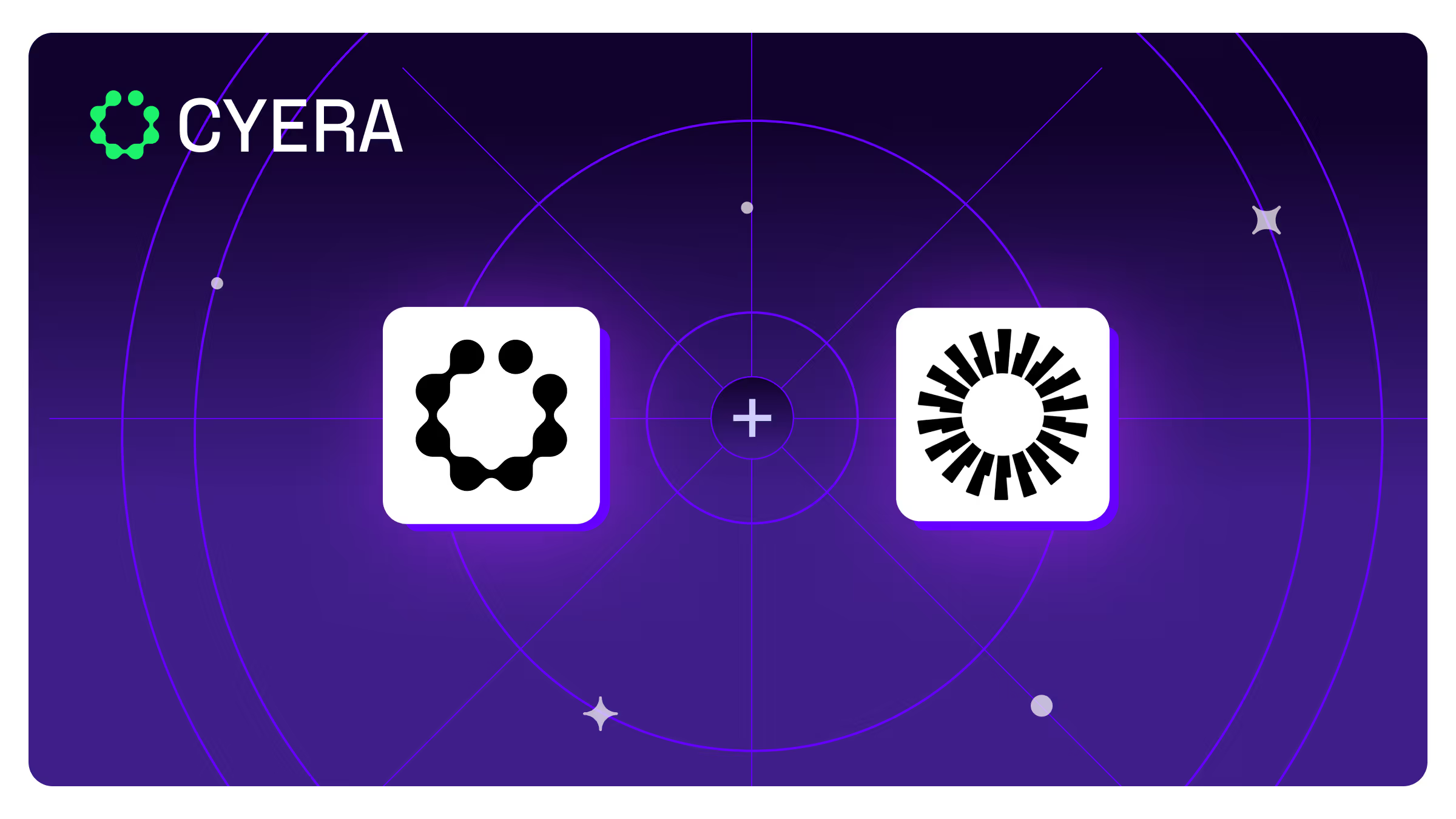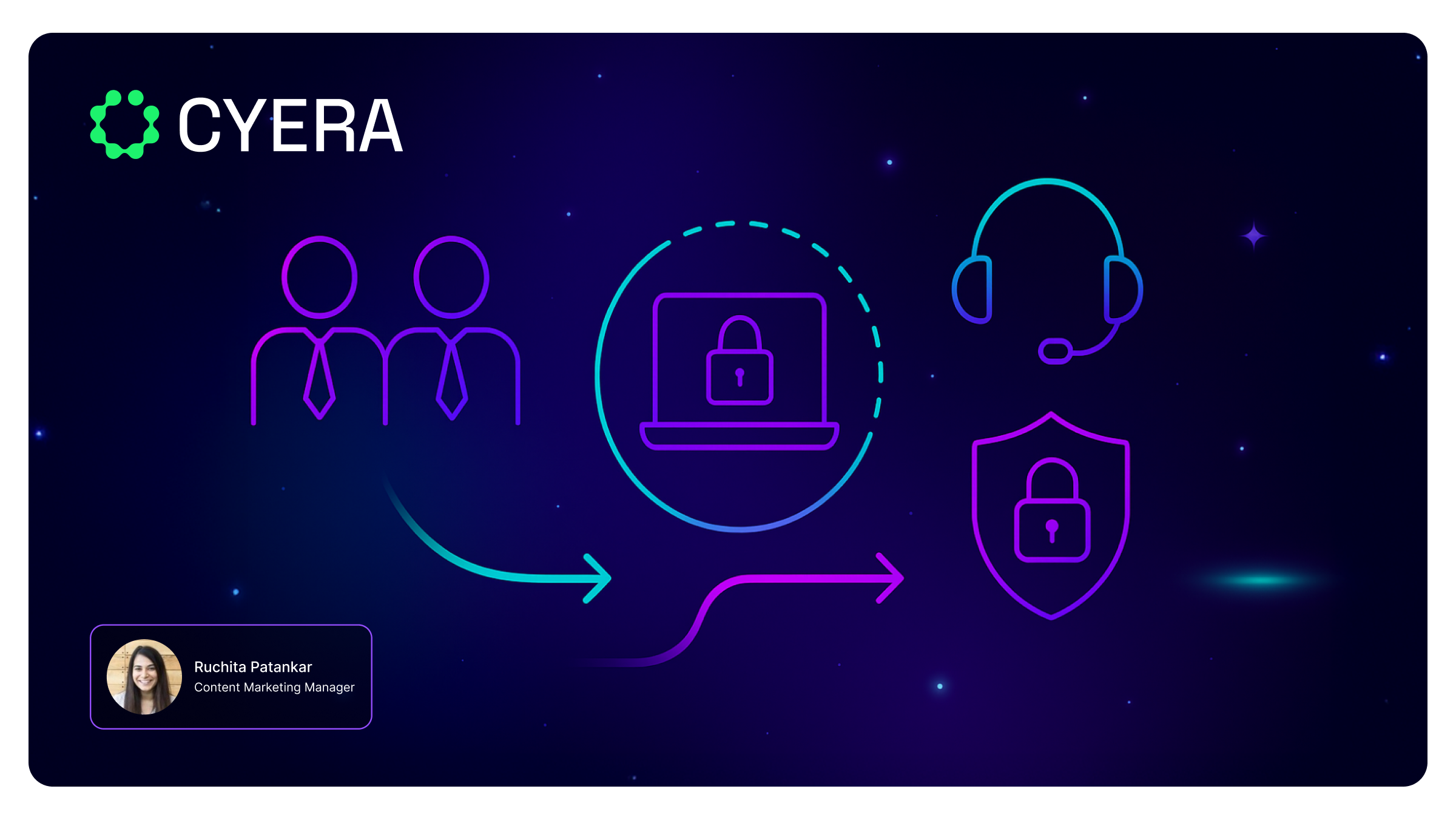Cyera e Okta: Eliminando Pontos Cegos de Identidade e Acesso a Dados na Era da IA

Um CFO não deveria ter que se perguntar se o marketing pode ver dados da folha de pagamento. Um CISO não deveria ter que adivinhar quais contratados podem acessar registros de clientes. No entanto, à medida que as organizações crescem, adotam mais plataformas e geram mais dados, esse é exatamente o desafio que enfrentam. Mais sistemas e mais informações criam mais riscos. A questão passa a ser não apenas "Onde os dados confidenciais estão armazenados?", mas também "Quem na organização pode acessá-los?"
A Cyera descobre e classifica seus dados mais sensíveis e mostra quais identidades podem acessá-los. Com nossa capacidade de enriquecimento de identidade Okta, você obtém uma visão consolidada de identidades anteriormente fragmentadas e seu acesso em todos os seus ambientes. Essa visibilidade ajuda você a reduzir sua superfície de ataque, diminuir o risco interno e atender aos requisitos de conformidade (por exemplo, garantindo que apenas a equipe financeira possa acessar informações financeiras).
Por Que Identidades Fragmentadas Criam Pontos Cegos
Na maioria das organizações, os funcionários não têm apenas uma conta. Eles têm várias. Uma única pessoa pode ter contas para Microsoft 365, Google Workspace, Snowflake e muitas outras. Cada uma dessas contas é frequentemente tratada como indivíduos separados pelas ferramentas de segurança, mesmo que todas pertençam ao mesmo funcionário.
Isso cria pontos cegos, incluindo:
- Visibilidade de acesso incompleta: Nenhuma fonte única de verdade sobre quais dados uma pessoa pode acessar em diferentes ambientes.
- Aplicação inconsistente da Autenticação Multifator (MFA): Algumas contas podem estar protegidas por MFA, enquanto outras ficam expostas.
- Permissões excessivas: Os usuários acumulam direitos de acesso ao longo do tempo sem revisão ou revogação.
Esses problemas são difíceis o suficiente na TI tradicional. Adicione copilots e outras ferramentas de IA e os riscos são ainda maiores. Se você não consegue mapear a identidade completa de uma pessoa aos dados que ela pode acessar, você não pode controlar quais dados as ferramentas de IA podem usar ou aprender.
O Módulo de Identidade da Cyera integra-se com o Okta para abordar esses pontos cegos diretamente. A Cyera aproveita o Okta para consolidar identidades fragmentadas em uma única visualização unificada. A Cyera então vincula essa identidade aos dados confidenciais que ela pode acessar em plataformas SaaS e de nuvem como AWS, Microsoft, Google, Snowflake e muito mais.
O resultado é uma visão unificada do acesso: quem é a pessoa, quais dados ela pode acessar e se a autenticação forte protege cada conta.
O Que Isso Possibilita para as Equipes de Segurança
1. Visibilidade completa de acesso
As equipes de segurança obtêm clareza sobre o que cada indivíduo pode acessar em toda a empresa. Chega de juntar relatórios de sistemas separados. Um registro consolidado mostra o escopo completo de permissões vinculadas a um único usuário.
2. Aplicação mais rigorosa do princípio do menor privilégio
Ao alinhar os direitos de acesso com as funções reais, as organizações podem identificar direitos excessivos e removê-los rapidamente. Isso impede que os usuários mantenham acesso a informações sensíveis muito tempo depois que suas responsabilidades mudaram.
3. Cobertura consistente de Autenticação Multifator (MFA)
As configurações de segurança da Okta alimentam diretamente o Módulo de Identidade da Cyera. Isso facilita a visualização de quais contas não possuem MFA e a aplicação de autenticação forte em todas as identidades.
4. Adoção de IA mais segura e rápida
A capacidade da IA de acessar rapidamente dados sensíveis, muitas vezes sem o conhecimento dos funcionários, apresenta um novo vetor de ataque. Agentes de ameaças podem comprometer usuários habilitados para IA para acelerar seu caminho até ativos críticos. Isso ressalta a necessidade de controles robustos de segurança de identidade, como os fornecidos pela Okta, e a importância de limitar o acesso da IA a dados sensíveis que ela não deveria ter, uma capacidade oferecida pela Cyera, permitindo que as organizações habilitem a IA com segurança.
Um Exemplo Prático: Passando de Suposições para Clareza
Digamos que um funcionário, um analista financeiro, caiu em um ataque de phishing. Você precisa avaliar rapidamente o raio de impacto e entender o risco. Para fazer isso, você precisa entender quais identidades foram usadas pelo funcionário e quais permissões eles tinham em todos os ambientes. Na Microsoft, eles podem visualizar arquivos de orçamento confidenciais. No Snowflake, eles têm acesso de leitura a registros de transações de clientes. Com o Google Workspace, eles compartilham informações financeiras confidenciais com auditores externos.
Sem o enriquecimento de identidade do Okta, essas três contas parecem três pessoas diferentes. As equipes de segurança não têm como conectar os pontos. Com Cyera e Okta, todas as três identidades são consolidadas em um único perfil de usuário. Essa visão unificada mostra todos os conjuntos de dados que o analista pode acessar, juntamente com a informação se a MFA protege cada conta. Se uma conta não tiver MFA, o risco é sinalizado para correção.
Essa clareza elimina suposições. Ela ajuda a garantir que o acesso do analista seja apropriado para sua função, consistente entre plataformas e protegido por autenticação forte.
Por Que Conectar Identidade com Acesso a Dados é Fundamental
A IA está ampliando os desafios existentes de identidade e acesso. Copilotos e assistentes são projetados para exibir e agir sobre dados onde quer que estejam. Quando você não consegue ver quais dados as identidades podem acessar, você não consegue controlar como as ferramentas de IA os utilizam.
Os líderes de segurança precisam saber, com certeza, quem tem acesso a quais dados e se os controles adequados estão implementados. A Cyera e a Okta tornam isso possível ao conectar identidade e segurança de dados em tempo real.
Como base da segurança moderna, dados e identidade são dois lados da mesma moeda. Com a Okta como fonte confiável de identidades e a Cyera fornecendo visibilidade profunda sobre o acesso a dados, as organizações podem finalmente responder às perguntas que mais importam:
- Quem são nossos usuários, realmente?
- Quais dados sensíveis eles podem acessar?
- Os controles adequados estão implementados para proteger esse acesso?
Responder a essas perguntas é essencial não apenas para conformidade, mas para prevenir riscos internos, impedir a apropriação de contas e adotar IA com confiança.
A Cyera e a Okta oferecem a visibilidade unificada que as organizações precisam para eliminar pontos cegos, aplicar o princípio do menor privilégio e proteger dados confidenciais na era da IA. Solicite uma demonstração hoje para ver a integração em ação.
Obtenha visibilidade completa
com nossa Avaliação de Risco de Dados.

.png)

